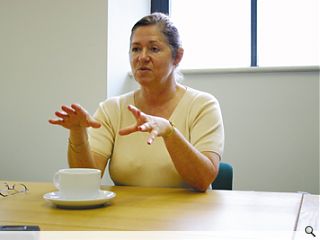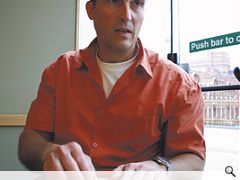Public realm
15 Oct 2004
Design professionals are under a lot of pressure to create not just buildings but places and spaces that work for their residents and workers and appeal to visitors. Creating convivial, densely occupied spaces outside the main retail drags of the UK’s city centres is a rather daunting task. The design team employed in Ancoats Urban Village are challenging conventional wisdom about the public realm.
Ancoats Urban Village covers 20 hectares of land on the edge of Manchester City Centre. The former industrial area, which is bounded by Great Ancoats Street, Oldham Street and the Rochdale Canal, contains some of the city’s most impressive dark satanic mills and is a designated World Heritage site.
Plans for a dense mixed-use development of the area have been slowly grinding on since throughout the 1990s. Until recently it was hard to see the potential of the place. The scale of the old mill buildings was impressive and their Piranesi-like state of decay made them intriguing, but it was hard to imagine how such a vast wasteland could be transformed into a new section of city.
Now there is a tangible smell of progress in the air. From the offices of Ancoats Urban Village Company (AUVC) at Waulk Mill, a mill conversion by Urban Splash that is finally filling up with small businesses, you can see the big diggers creating the infrastructure for the New Islington project. In the Royal Mills the show flats paint a very strong picture of what life in Ancoats could be.
Where the Rochdale canal meets Great Ancoats Street a small public square has just been completed. It’s not even a square really, a little strip of elegant hard landscaping and seating overlooking the water, sheltered by the majestic Royal Mills on one side and overlooking a retail park. It is modest, but it is an indication that there are people involved in this project who are thinking very carefully about the public realm.
Two important players behind the plans for Ancoats are Lyn Fenton and Martin Stockley. Both are strongly committed to creating the kind of place where any of us would choose to spend time. Fenton heads up the Ancoats Urban Village Company that has recently been incorporated into New East Manchester initiative.
She has created an environment in which her consultants, particularly the ones wearing creative hats, take responsibility for the whole process of place-making.
“A lot of what we have been doing is not immediately obvious. In fact, much of their time they have been working to irradiate the idea of an ‘urban realm scheme’,” says Stockley. “I don’t think of myself as an engineer, and when we sit around a table we don’t come to the process wearing our professional hats. We all get involved in trying to define problems. It is different from the past, where you would get experts like the archaeologists working away alone. Now we look at what they are finding and we say that’s ours, that is for all of us, that is not a vase on the shelf, that is part of the richness of the place.”
Together with Stockley, artist Dan Dubowitz, landscape architect Robert Camlin, Fenton is attempting a quiet revolution, a challenge to conventional wisdom on traffic management and a more flexible approach to the role of professions involved in making public space.
AUVC’s strategy, before Gap funding was outlawed by the EC, was to tip the balance in favour of development, to demonstrate that the public sector was willing to invest in Ancoats and to use CPOs where necessary. Fenton and the city council produced outline planning guidance that was more visual and aspirational than most. “At the time, we were plagued with proposals for poor buildings,” recalls Fenton. “We felt that we needed to enthuse to give people a sense of where Ancoats could go. We tried to minimise the prescriptive nature of the guidance.”
Working in public sector regeneration can be very frustrating especially if you are trying to push new initiatives. “It’s a fragile thing. All you need is a change of personnel with an individual in the highways department and five years of work can disappear,” she says. However, the intention has survived, in large part because of Fenton’s clear sense of purpose.
“I don’t like Home Zones, they look artificial. When an area is entirely residential there may be a case for it, but in Ancoats we are not aspiring to be a comfy little suburb. Ancoats has got to meet many needs,” says Fenton. “In Ancoats our only public realm is the streets. We wanted to reduce clutter, encourage permeability, we were clear that we did not want pedestrian zones but that we could use two-way traffic to slow the traffic down and we knew we wanted to create a place that was pedestrian-friendly. We wanted art to be part of the process.”
In 2000 AUVC embarked on its first public realm work. “It was an improvement, but now it is four years old you can see that it didn’t work,” says Fenton. “You can have ambitions but its not good enough if you don’t have somebody to deliver. We were not radical enough. We narrowed the road, but we kept the one-way system and the quality of build was not there.” For the next stage of the public realm work she employed a team of professionals that included Robert Camlin of Camlin Lonsdale and Martin Stockley. “Their approach challenges all of the textbook rules about road safety,” says Fenton. “The places we enjoy most are mostly place where the pedestrian takes priority, but they are still permeable. We have seen what happens when you shut streets down to traffic or introduce one-way systems. It can kill an area very quickly and Ancoats is very fragile. You need a delicate balance with things like on-street parking or people won’t bother to come to the area. We are re-introducing two-way traffic as a means of slowing cars down.”
Engineer Martin Stockley shares Fenton’s concerns. He has worked on a number of high-profile engineering projects, like No.1 Deansgate in Manchester, but increasingly his work is dealing with significant public realm schemes. One of his achievements is Exchange Square, the area reworked following the IRA bombing of Manchester City in 1996.
He is highly critical of the current approach to the design of public spaces. “I became involved in the public realm by asking questions that other people aren’t asking,” says Stockley. “What became clear was that the public realm was being dictated by a small number of guys making technical decisions, saying that they were for the people, but they weren’t. If you look at what we achieved in Manchester city centre, the big change is in the movement. We started to reclaim land, the wasted parts of the city centre.”
Stockley is currently working on the New Islington site with Urban Splash, and has been dubbed as one of the so-called “Manchester Mafia” – that body of men that always seem to be around when any interesting development projects are taking place in the city. Stockley admits that the city does have an “inner circle” of developers and consultants who get on well and consistently win work, but he says it is a meritocracy rather than a clique.
Stockley thinks that we are far too technical in our approach to urban design, forgetting that public life is about negotiating relations with others, not just following a rulebook. “We are in a world now where we need, not radical solutions, but management. They are not technical solutions, really they are philosophical.”
One thing that Stockley is very clear on is that while we may need to manage the redevelopment on public space we need to stop trying to manage people. “One of my pet issues is controls. Late-nineteenth- to twentieth-century authorities have become very controlling about public realm. You used to be able to cross the high street when and where you wanted, then the local authority responds to a demand for somewhere to cross the road and in no time you can only cross the road in the manner they say. We collectively said ‘liberate us from a problem’ now the local authority has restrained us.”
However, unlike many, he doesn’t blame the traffic engineers. “Nowhere in the traffic engineers’ brief does it say make your city a better place. Our local authorities are not geared up to the public realm. The planner’s job is to apply planning rules, the highway engineers’ job is to look after safety. The local authority takes up control and people yield responsibility. I want places where people can be creative, not designers.”
Read previous: The Winners
Back to October 2004
Browse Features Archive
Search
News
For more news from the industry visit our News section.
Features & Reports
For more information from the industry visit our Features & Reports section.




